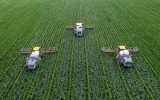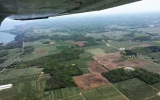The Average Cost of Buying & Owning a Smallholding (With 4 Examples)
Setting up a smallholding to enjoy your own homegrown produce or reach full self-sufficiency undoubtedly comes with having to handle the initial costs. While there isn't a one-size-fits-all approach to starting a farm business, being aware of the costs of buying and owning a smallholding is a good idea.
In the US, the average cost to buy a smallholding is $15,400, while the average cost to own a smallholding is $2,700. In contrast, the average cost in Europe to buy a smallholding is €32,600, and the average cost to own a smallholding is €7,200. All these figures are annual averages.
Some of the item costs are estimates, but everything is extracted from reputable sources. A great deal of research was done for this article to try to help you anticipate how much to prepare before starting your own farm business. You'll also have an idea of what costs will have the biggest impact on your budget and how to reduce such costs.
Summary
- You'll need an average amount of starting capital—$15,000 in the US and €19,000 in the UK—to establish a small farm.
- The top four costs for buying a small farm are land, soil preparation, an irrigation system, and tools and equipment.
- The common costs for owning a small farm are feeds, water, electricity, fuel, and labor.
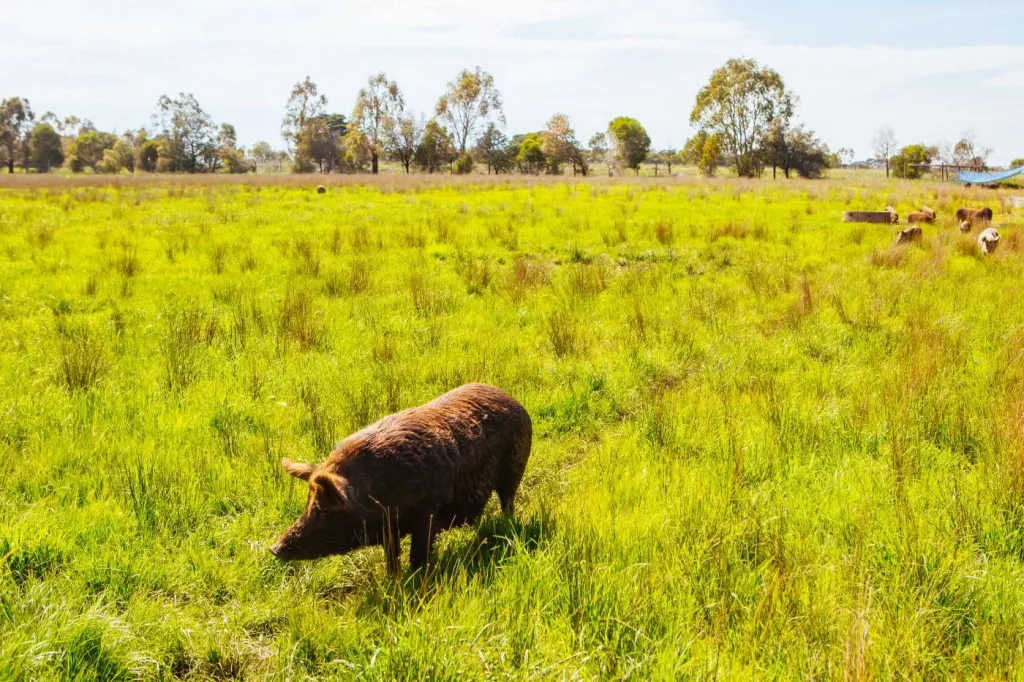
On this page:
Costs of Buying and Owning A Smallholding
Overview of average initial costs
To start a small crop farm, you'll need initial cash of around $14,000. For a livestock farm, you'll need around $22,000. The location, the equipment used, the size of the farm, the sort of labor required, and the crops and livestock a farmer intends to raise, among other things, all have an impact on the expected starting cost.
- small crop farm: $14,000
- small livestock farm: $22,000
Average costs for 4 small farm types
The table below is a summarization of four example scenarios we've researched and calculated in detail. I'll dive into those numbers in great detail a little bit later in this article.
| Farm type | Input costs | Running costs per year |
|---|---|---|
| small cattle farm in Sullivan County, Missouri | $21,300 | $1,357 per head |
| small corn farm in Cheyenne, Wyoming | $9,675 | $4,067 |
| small pig farm in Veneto, Italy | €42,000 | €6,500 |
| small wheat farm in England, UK | £23,204 | £7,910 |
Farmland costs greatly vary per location
A significant contributor to the rising cost of farming is land costs. The USDA reported in 2022 that cropland value in the United States increased by $630 per acre (14.3%) from 2021 to an average of $5,050 per acre, and the average pasture value in the US increased from $1,650 per acre by $170 per acre (11.5%) from 2021.
Expect to pay between 5 and 10% of the land's value each year if you want to lease the land
Farmland costs vary widely depending on where you look. An acre of land in the state of Wyoming is typically worth $1,558 (£1,100). In contrast, the price per acre in California is $39,092 (£28,000). Expect to pay between 5 and 10% of the land's value each year if you want to lease the land rather than buy it. In the UK, the average price per acre for agricultural use is roughly £7,000 ($9,700).
Critical equipment costs
You'll also need different equipment depending on the type of farm business you plan to start. In your local smallholding community, you can find tools and equipment like a rototiller and a seeder, shovel, bed rake, digging fork, stirrup hoe, standard rake, farm jack, wood chippers, farm hats, wheelbarrow, chainsaw, containers, farming gloves.
Consider also the cost of materials to build fences and animal housing, or plant beds, seeds, compost, and other soil amendments, fertilizer, or other supplements to improve the health of your soil. These upfront costs soar quickly, but it's crucial to avoid trying to save money. Investing in high-quality materials and equipment will always be more beneficial than buying something cheap just to replace it soon after.
Input costs are the upfront expenses
The expenditures associated with running a farm that must be paid upfront before production can start are called input costs. They include items like fertilizer, pesticides, seeds, weaned animals, feed, and other supplies used in production. A farm's variable expenses can vary based on how much is consumed, and they can include items like fuel and oil, electricity, labor, repairs and maintenance, water use, and storage.
The main concerns for farmers are the sharp rises in the cost of fuel, machinery, fertilizer, and seed. Since the global financial crisis's onset in 2008, the price of oil alone has more than tripled. The most significant increases were seen in animal feed and medicine, fuel and power, and fertilizers, rising by 36%, 43%, and 134%, respectively, while machinery increased by 25%.
Below are four examples of smallholding farms in the US and the UK, with sample computations of cost to buy and cost to own presented in four different locations. Let's take a look at each of them.
The cost to start a small cattle farm in Sullivan County, Missouri
Keeping cattle is the most popular livestock activity. Cattle are remarkably low-maintenance and provide a decent return for each animal you rear. If you can raise them organically, you can sell your beef, milk, and cheese to a market that is much more lucrative.
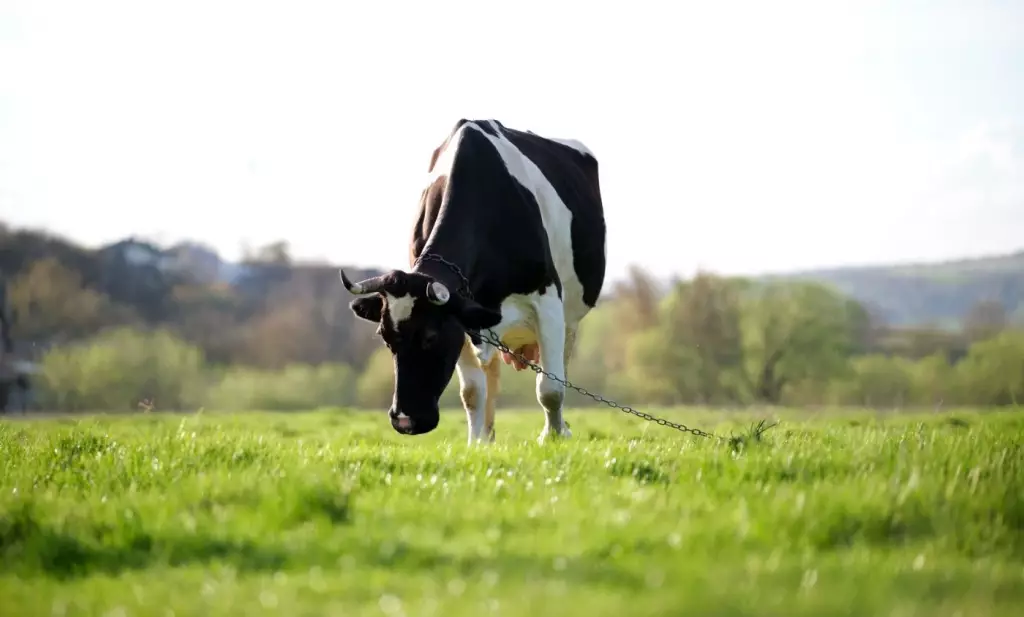
Missouri's topography significantly influences its agricultural diversity. Missouri's history, culture, and economy have been influenced by its roots in the cattle industry, which places it third in the country for beef production. The farming practices of successive generations are prominent in Missouri's livestock business. Due to the state's inherent capacity to provide pasture, farmers have long incorporated cattle into the state's culture.
The beef sector in Missouri is an example of the dedication of Missouri's farmers and ranchers to good stewardship, providing the world with a plentiful supply of nutritious food. Missouri has a solid tradition in agriculture. Two-thirds of the land area in the Show Me State is made up of 95,000 farms, which produce many of the state's top agricultural products, such as cattle and calves, hogs, and turkeys.
All around the state, there is plenty of fertile soil that is ideal for growing crops. Missouri is a great location for business since it has access to three Foreign Trade Zones (FTZs), major water systems, rail networks, highway systems, and airports.
Cost to buy a small cattle farm in the US:
The rule-of-thumb states that it takes 1.5 to 2 acres to feed a cow-calf pair for a year. In this example, we assume 2 acres of land where the cost of land per acre in Missouri is $2,400, and a pair of cows that cost $2,000 per head.
The cost of farm equipment can be very high. With small farms, though, you might not require many tools. Typical tools include a shovel, a bed rake, a digging fork, a stirrup hoe, a standard rake, a farm jack, wood chippers, farm hats, a wheelbarrow, a chainsaw, containers, farming gloves, and others. Budget between $700 and $1,000 to buy the tools you'll need.
Look for land that will be appropriate for growing without much soil preparation. If you do not have any decent soil on your property, expect to pay a lot to get it fixed. You will have to pay anything from $200 to $2000, depending on the problem.
A 12x24 loafing shed is made using durable wood materials to last for many years. Spend your money wisely and buy a solid wood loafing shed rather than one that is made of cheap metal.
A large fenced area, up to 3–5 acres, is required if you want to keep feed costs to a minimum. Dwelling for cows can be very expensive. Using a smaller area and purchasing feed in the winter might reduce the upfront cost. The initial cost of fencing is expected to fall within the range of $400 and $1000.
Drip irrigation systems are rather pricey. One acre of land might be irrigated with a system for the mainline and header pipe, one lateral with 12 sprinklers, and a 10-hp gasoline pump. A drip irrigation system will cost roughly $1,000 to install per acre.
| Item | Cost |
|---|---|
| Livestock (cows) | $4,000 |
| Land | $4,800 |
| Soil preparation | $2,000 |
| Loafing shed | $6,500 |
| Fencing | $1,000 |
| Tools & equipment | $1,000 |
| Irrigation system | $2,000 |
| Total one-time cost | $21,300 |
Cost to own a small cattle farm in the US:
For the feeds, it is recommended to use 3 pounds of hay per 100 pounds of body weight. Hence, a 250-pound feeder calf needs 7 pounds of hay daily. Expect to spend between $30 and $40 per month on feed for your cow, depending on where you live and the size of your pasture.
Another significant ongoing expense is the cost of water. Water is a recurring expense that rises quickly in cost. If you must purchase it on a daily basis without collecting rainwater, the cost can add up rapidly.
The cost of maintaining a pasture would only cover the most basic cash costs of fuel, maintenance, and repairs, as well as a little bit of reseeding, fertilizer, and fencing repairs.
Dairy farms typically use 800 to 1,200 kilowatt-hours (kWh) per cow annually, at $0.08/kWh.
Fuel prices hit a new high of $5.718 per gallon in June 2022, according to the U.S. Energy Information Administration. Fuel consumption of farmers may be two gallons per acre or more depending on tillage depth and/ or the number of different soil manipulations that occur
In addition, a farmer will be required to cover other direct expenses, including wages and direct charges for things like livestock, feed, fuel, fertilizer, and pesticide. These costs could run into the thousands of dollars every year.
Most animals will require a livestock sitter if you intend to be gone for more than 12 to 24 hours.
The cost of vet visits can start at $50, but if the veterinarian has to go to your farm, the cost may be three to four times more.
Breeding expenses should include the annual depreciation of the cow and cow maintenance costs, divided by the number of cows.
| Item | Cost |
|---|---|
| Feeds | $150 per ton |
| Water | $600 |
| Insurance & tax | $40 |
| Maintenance | $40 |
| Electricity | $64 |
| Fuel | $23 |
| Winterize | $200-600 |
| Vet and medicines | $40 |
| Livestock sitter | $10 per hour |
| Breeding | $80 |
| Total cost per year | $1,357 per head |
| Total cost per month | $113 per head |
The cost to start a small corn farm in Cheyenne, Wyoming
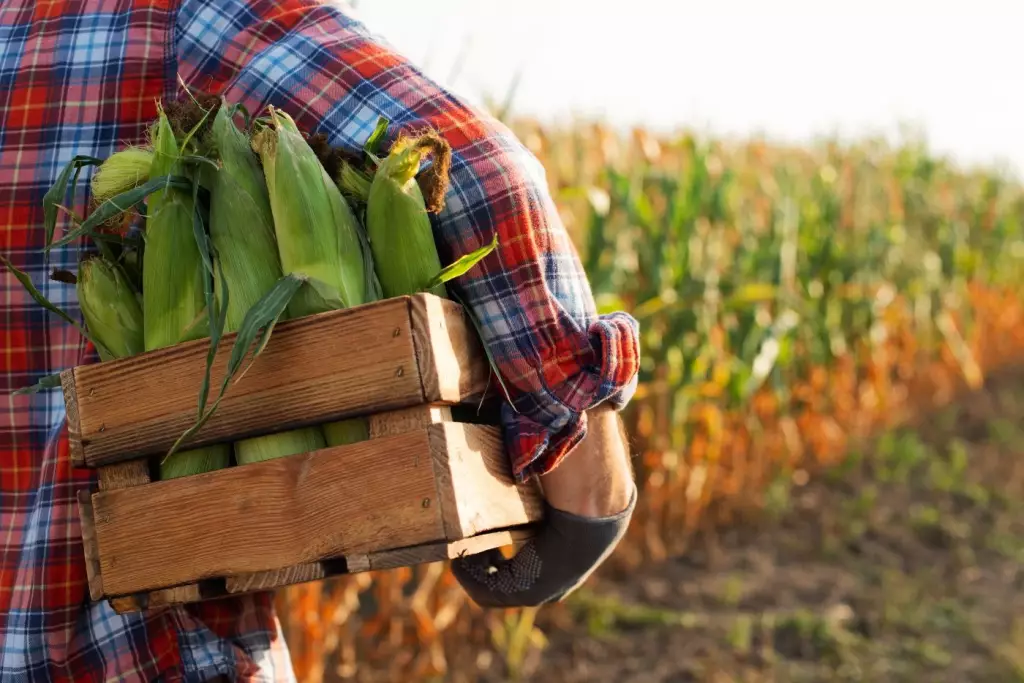
Wyoming possesses the largest average farm size in the US and the cheapest cost per acre. The lack of taxes is one advantage of conducting business in the state; this is always a plus.
There are irrigated areas around Wyoming where crops are grown. Corn and small grains are among the alternative cropping options that are possible with irrigation in this state. Small businesses in small towns provide the majority of the support for farming and ranching areas.
Cost to buy a small corn farm in the US:
A bag of seed corn contains 80,000 kernels that can cover about 2.5 acres of land. In this example, we assume 2.5 acres of cropland in Wyoming that will cost $1,720 in 2022, according to the USDA.
Depending on the variety, the price of a 50-lb bag of seed corn might be anywhere from $50 to $150.
Depending on variables such as field proximity to a water source, field shape, level of mechanization, and other factors, the per-acre investment can range from $2,000 to over $4,000.
If your land needs extensive soil preparation, expect to pay a lot to get it fixed. Depending on the issue, you will have to pay anywhere from $200 to $2000.
The equipment needed for a corn farm are the following: a tractor, one or two bottom plows, a disk implement, a cultivator, and an old wagon or pickup vehicle. If you're willing to put in a lot of work, these will be enough.
For about $1,000, you can buy a decent walk-in cooler, but you can also find one for a lot less money. As an alternative, you could make one yourself and save a few more dollars.
| Item | Cost |
|---|---|
| Land | $4,300 |
| Corn seeds | $375 |
| Irrigation system | $2,000 |
| Soil preparation | $0-2000 |
| Tools & equipment | $1,000 |
| Total one-time cost | $9,675 |
Cost to own a small corn farm in the US:
According to the Department of Agricultural and Consumer Economics, costs for pesticides remain in the $60 range: $67 in 2014, $66 in 2015, and $64 in 2016. In 2017, the price of pesticides per acre jumped further to $73.
Labor costs are $99 per hectare for 2 man-days per acre during harvest.
During the seedling stage, corn consumes incredibly little water. 20 to 35 acre-inches of water are needed for sweet corn. For the first 3 acre-feet of water that farmers consume, they are charged $15 per acre-foot.
The electricity cost for Wyoming in November 2022 amounted to $11.07 cents/kWh. A small corn farm uses 0.43 kWh.
On small farms, diesel is the fuel that is most frequently used to grow maize. Small farms use less electricity for irrigation and even less electricity per unit of maize product, but they require a lot more fuel, with 13.56 gallons per acre, particularly diesel, for field work.
Fertilizer costs have been rising since August 2020, with an even more significant increase beginning in January 2021. Corn fertilizer expenses were $175 per acre on September 23, 2021, and went up by $72 per acre to $247 per acre on September 22, 2022.
For packaging, you can purchase some plastic containers for a reasonable price. Instead, you can also use plastic or paper bags; however, such options tend to appear a little less polished. You should budget between $100 and $200 for containers or substitutes.
| Item | Cost |
|---|---|
| Pesticide | $198 |
| Labor | $99 |
| Water | $38 |
| Electricity | $1,700 |
| Fuel | $23 |
| Winterize | $200-600 |
| Fertilizer | $320 |
| Total cost per year | $4,067 |
| Total cost per month | $339 |
The cost to start a small pig farm in Veneto, Italy
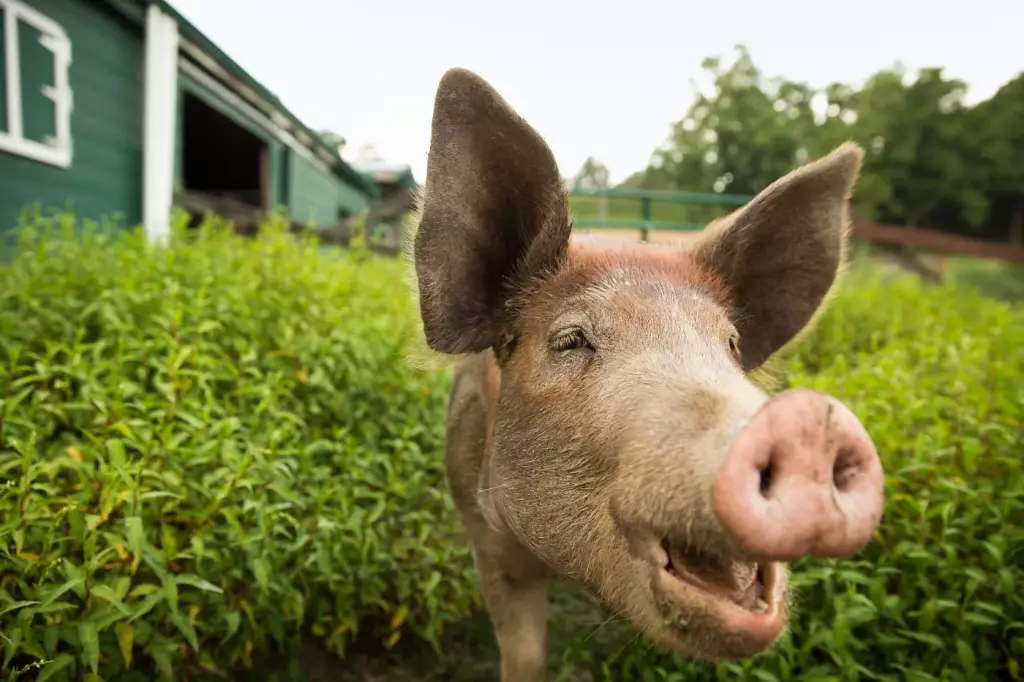
With the agricultural industry making up roughly 2% of GDP, Italy is one of the EU's top producers of food and agricultural products. The agricultural difference between the EU's north and south may be seen in Italy. While the southern region of Italy is known for its durum wheat, the northern region of the country is known for its grains, soybeans, beef, and dairy products.
A little over 6% of the population works in agriculture, despite the fact that much of the country's mountainous terrain is unsuitable for farming. The majority of farms are small, with an average size of 11 hectares.
Cost to buy a small pig farm in Europe:
Renting a hectare of permanent grassland or arable land in Italy will cost an average of €837 in 2020. Italy has the highest arable land value per hectare in the country. A hectare of arable land in Italy costs 35,447 euros as of 2020. In this example, we’ll use a hectare of land.
Feeder pigs are the least expensive option. The cost starts at €50 per pig and can cost up to €200. Breeding swine with special genetics can cost upwards of €2,000. You may easily start a pig farm with a boar and three sows, creating a total of four pigs.
Small farms can sustain pigs comfortably. The stocking rate is 10 to 50 piglets or 5 to 10 larger sows per acre, depending on the climate and topography. For this example, we’ll assume a boar and three sows.
The cost of installing an irrigation system ranges from €1,430 to €2,135. Irrigation systems can be intricate underground networks. Although performing your own DIY installation could initially be less expensive, unanticipated risks and crucial water pressure adjustments might end up costing a lot of money.
A three-sided structure with a roof provides excellent protection from the weather. Plan for at least 20 square feet per pig if you're rearing them outside in a pasture-type setting.
For fences, you can either install a three-strand electric system or use hog panels. For wintertime pig fencing, hog panels are often the best choice.
Some important items you need to have on your pig farm are crates, feeders, nipple drinkers, fans, coolers, lamps, incubators, and cleaning supplies such as gloves and pressure washers.
| Item | Cost |
|---|---|
| Land | €35,447 per hectare |
| Livestock (pigs) | €600 per head |
| Registration | €400 |
| Taxes | €0 |
| Irrigation system | €1,500 per acre |
| Shelter | €1,000 |
| Tools & equipment | €1,000 |
| Fencing | €2,000 |
| Total one-time cost | €42,000 |
Cost to own a small pig farm in Europe:
Farms typically use 2.5 cubic liters of water per day at a cost of €1.98. Almost 70% of the cost of raising pigs to maturity is spent on feeding them. You must invest in durable resources, such as automatic feeders.
Feed is the biggest and most important single expense for pig farmers. The primary component of pig feed is wheat. Corn, soy meal, oats, or feeds based on farm grains are the main ingredients in the diets of domesticated pigs.
According to a Teagasc survey, the average amount of energy used on farms ranged from 18 to 45 kWh per pig produced, with an average electricity cost of €0.18/kWh.
In the winter, the entrance must have a sackcloth or similar covering. Pigs can sleep on peat moss, straw, hay, or shavings. For wintering pigs, one of the warmest material combinations is a shavings base with straw on top.
The EU regulations (Implementation Decision (EU) 2017/302) for reducing ammonia emissions still regard the routine removal of slurry from animal housing, the covering of manure, or its prompt burial procedures as the Best Available Techniques (BAT).
Pigs should receive a swine fever vaccination at two weeks of age. All pigs must be routinely immunized against swine fever during weaning. Pigs for your farm should be bought from a herd that is free of disease.
| Item | Cost |
|---|---|
| Feeds | €270 per tonne |
| Water | €2,800 |
| Electricity | €14 |
| Fuel | €187 per hectare |
| Winterize | €25 |
| Ammonia control | €100 to 200 per sow |
| Vet and medicines | €44 per sow |
| Insurance | €320 |
| Livestock sitter | €160 per day |
| Total cost per year | €6,500 |
| Total cost per month | €545 |
The cost to start a small wheat farm in England, UK
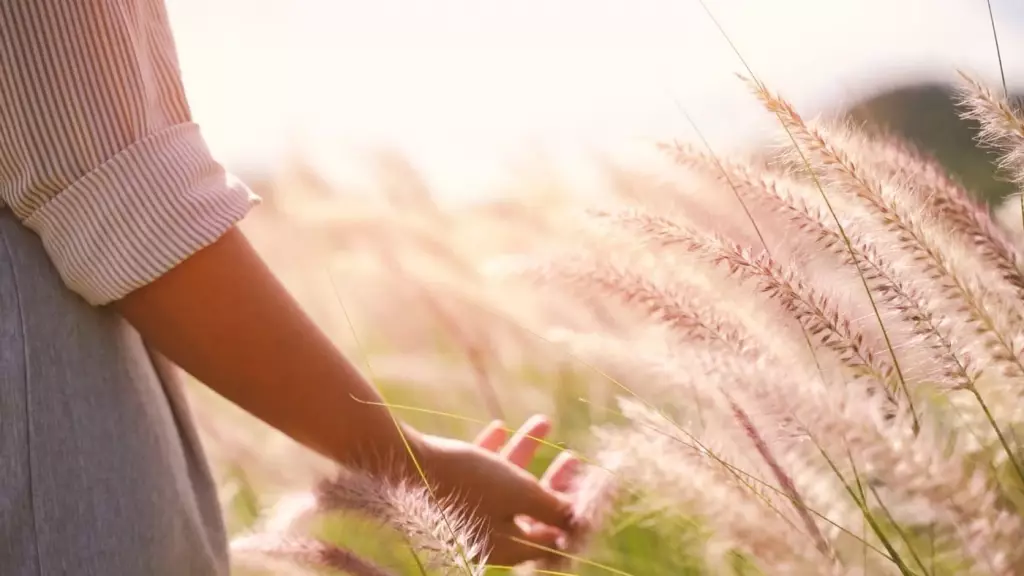
Because of the flatter terrain, fertile soils, and warmer, drier climate, farms in the south and east of the UK are typically better suited for arable farming. The UK is the place where wheat really thrives because of our regular rainfall and temperate climate, which has recently led to record harvests. And it's not just quantity; Britain is famous throughout the world for the superior quality of its wheat.
Wheat can be sown twice a year, in the autumn and the spring, which is one of the reasons it is such a well-liked crop in the UK. Then, in August, they are both harvested. The majority of farmers in the UK choose to sow in the fall so that the crop may flourish all winter. This usually yields more than the spring crop and enables farmers to find and get rid of any early-growing blackgrass.
Cost to buy a small wheat farm in the UK:
According to a 2021 Carter Jones report, the average cost of an acre of arable land in the UK is £8,450.
You can buy the seed from a number of tenders that you obtain bids from for seed at a good price of £354 per tonne.
A variety of irrigation techniques can be used to grow wheat. Drip and sprinkler irrigation systems can apply less water than surface flood irrigation systems, and as a result, less applied water passes through the root zone. A 120-day irrigation season will require 40 cm of water to irrigate a wheat crop.
The tools and equipment you need to prepare for your wheat farm are the following: a scythe, a sickle, a thresher, a grain mill, a fagging-hook, a chaff-cutter, a flail, winnowing tools, a harvesting tool, containers and pots, garden gloves, a garden trowel, pruners or snippers, rain barrels, a spade, a spray bottle, a watering can, and a wheelbarrow.
| Item | Cost |
|---|---|
| Land | £8,450 per acre |
| Seeds | £354 per tonne |
| Registration | £400 |
| Taxes | 0 |
| Irrigation system | £2,000 per acre |
| Soil preparation | £1,000 |
| Tools & equipment | £11,000 |
| Total one-time cost | £23,204 |
Cost to own a small wheat farm in the UK:
Prior to planting or after wheat is harvested, one substance that is frequently used by wheat growers to effectively manage grass weeds is glyphosate. In the UK, glyphosate is sprayed on nearly two-thirds of the grains, including wheat and barley.
The average electricity rate is now around £0.16 per unit, whereas the average perceived rate is about £0.25 per unit.
The most economical option for fuel is typically to acquire it from a local utility, but you may frequently purchase fuels like natural gas from the best bidders in your service area. On your farm, you use fuel mostly for grain drying, plowing, field cultivating, planting, and spraying.
Early in 2022, the price of ammonium nitrate fertilizer reached a peak of around £1,000 per tonne, but by May 2022, it had dropped to less than £650.
| Item | Cost |
|---|---|
| Pesticide | £45 per hectare |
| Water | £2,800 |
| Electricity | £2,150 |
| Fuel | £2,000 |
| Winterize | £25 |
| Ammonium fertilizer | £650 per tonne |
| Labor | £20 per hour |
| Total cost per year | £7,910 |
| Total cost per month | £660 |
What are The Biggest Costs to Farmers?
According to the National Agricultural Statistics Service, for the year 2020, the biggest costs to farmers, averaging per farm, are as follows:
- Feed costs amounted to $28,250
- Livestock, poultry, and related expenses totaled $19,695
- Farm services costs were $22,232
- Labor expense is $18,253
- Fuel expense is $11.1 billion
In 2020, the average total expenditure for a crop farm will be $208,571 compared to $160,203 per livestock farm.
The top two expense categories for dairy farmers in the USA are feed and labor, and both have increased. Feed expenses are up 11.0%, while labor costs are up 6.6%. Feed expenses for farmers raising beef are also rising, and the cost of feeder livestock has increased by 14.1%. On the crop side, the USDA only shows a 3.9% increase in fertilizer prices.
In the UK, fertilizer and rent are most likely the two largest costs for all grain farms in 2021.
How to Reduce Your Smallholding Costs
Farms spend 84% of their variable costs on inputs for crops and livestock, which can be reduced by improving feed efficiency, breeding animals selectively, and/or adhering to a thorough plan for crop nutrient management.
Research is essential before buying fertilizer, insecticides, herbicides, and seeds; compare prices and supplier quality. Keeping livestock and plant diseases under control can assist farmers in saving money on inputs like veterinary medications and plant protection products.
Utilize recycled materials for your compost bins and planting beds to reduce initial costs. This could be an excellent way to cut costs while making your farm more environmentally friendly.
When it comes to tools and equipment, don't be afraid to ask around in your neighborhood to see what you can borrow first. New farm equipment may have advantages, but it might not be economical for your operation. Your balance sheet may benefit more if you put off making changes to your machinery right now and instead focus on maintaining what you already have in anticipation of future price cuts.
A good rental substitute that not only saves you money on rent but also gives you a long-term investment with growth potential is buying farmland. Also, having ownership gives you more freedom in deciding how to use your land. Here's a detailed list of how to reduce input costs on your small farm.


